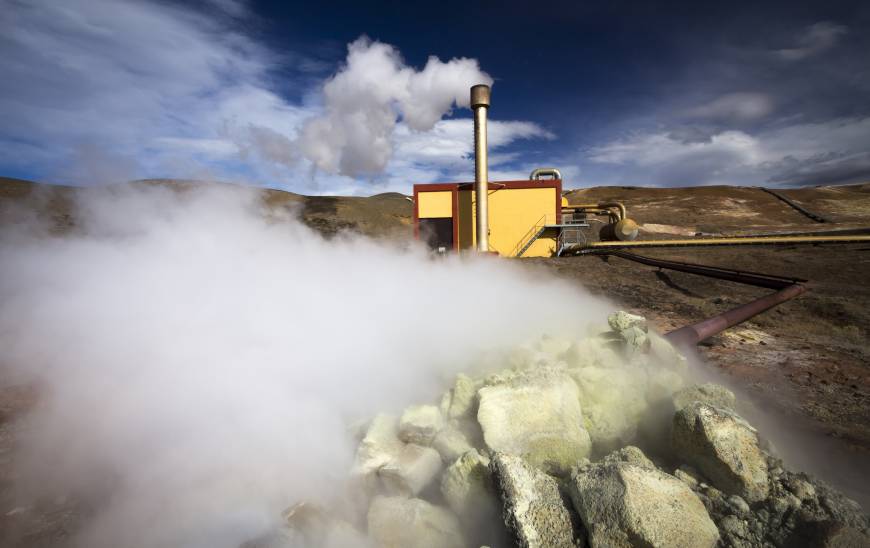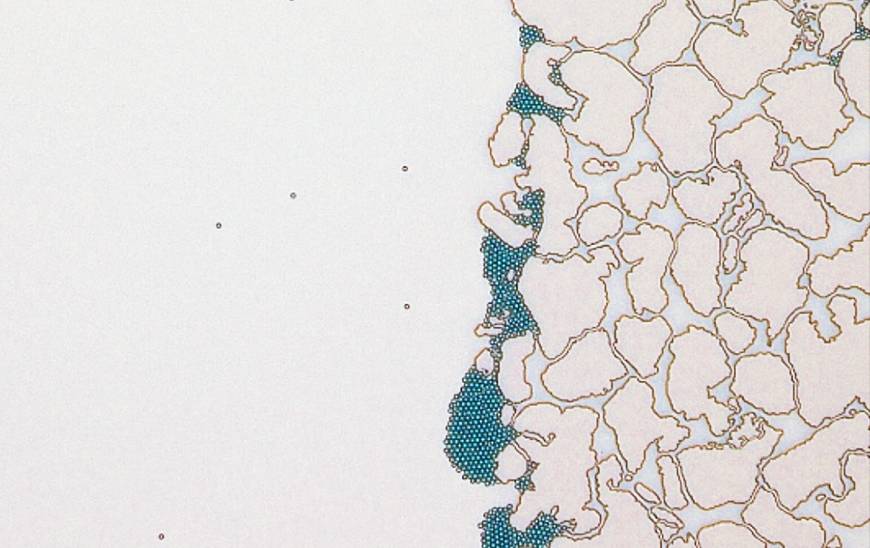The Stanford School of Earth, Energy & Environmental Sciences is now part of the Stanford Doerr School of Sustainability.
This page is currently being maintained for archival purposes only. For the latest information, please visit us here.
Geothermal Benefits from Advances in Fossil Fuels, Medicine
The search is on for alternative fuel sources that can help meet the growing needs of society for energy, but with low emissions of carbon and other pollutants. At Stanford, some of the technology and know-how that has long helped optimize fossil fuel resources with a minimum of negative impacts is also advancing the development of low- and no-carbon fuels.
Stanford School of Earth, Energy & Environmental Sciences
June 8, 2015

CARDAF/Shutterstock

From left: Professors Roland Horne, David Pollard, and Mark Zoback
Geothermal energy is one such promising source of clean, steady, and sustainable power. It involves capturing heat from deep inside the Earth that finds its way through layers of rock to the surface, carried by water and other hot fluids. Although geothermal accounts for 5 percent of the electricity generated in both Nevada and California, it is not a substantial contributor elsewhere in the United States.
Geothermal energy has been a small part of the global power mix for decades and, for just as long, has been held up as having vast potential. Now faculty from three departments in the School of Earth, Energy & Environmental Sciences are pooling their expertise to finally move geothermal forward.
One of the biggest obstacles to widespread adoption of geothermal energy is a lack of knowledge about how the fractured rocks within a geothermal field transport hot fluids to drive the electricity-producing turbines, according to Roland Horne, the Thomas Davies Barrow Professor and director of the Stanford Geothermal Program in the Department of Energy Resources Engineering.
Horne has been working to improve understanding of the complicated structure and seemingly unpredictable behavior of geothermal fields, which he estimates could produce enough power to meet 5 percent of demand for electricity not only in the west, but nationwide. And he found the additional, specialized expertise he needed in two of his Stanford Earth colleagues.
Geologist David Pollard, the Barney and Estelle Morris Professor in Earth Sciences, is an expert on rock deformations related to faulting and fracturing. Geophysicist Mark Zoback, the Benjamin M. Page Professor and director of the Stanford Natural Gas Initiative, specializes in reservoir geomechanics.
Together, Horne, Pollard, and Zoback are translating science and engineering advances from shale gas development into new ways of mapping geothermal fields.
"Dave understands fractures—what they’re like, and how they’re made,” says Horne. "And Mark knows how fractures grow, including how they can produce seismicity when you interfere with them. So my work has benefited a great deal from their expertise."
With input from Zoback and Pollard, Horne and his students have developed techniques for combining complex mathematical models with real-world data to determine the fracture structure of geothermal fields deep underground, model the flow of fluids through porous rocks, and mitigate the effects of induced seismicity within geothermal fields.
Diagnosing Geology with Medical Nanotechnology
Inspired by disciplines far removed from the geosciences, Horne’s laboratory is also pioneering the development of temperature-sensitive “nanotracers” that can be injected into the Earth to reveal information about the subsurface.
Courtesy of Professor Roland Horne

Nanotracers (above, as viewed through a high-powered microscope) could make it possible to produce geothermal energy in areas where complicated geology has previously made it too difficult.
"We borrowed that idea from the medical industry," Horne explains. "Researchers have developed drugs encapsulated within nanoparticles that float around inside the body and melt or open at a certain temperature. The temperatures in the Earth are much higher, but our nanotracers work in essentially the same way."
Nanotracers could allow engineers to tap geothermal resources in places that are presently difficult to exploit, a strategy that is known as “enhanced geothermal systems."
"The problem with enhanced geothermal systems is that they're dependent on geology, and geology is different everywhere. The attraction of using nanotracers is that you could characterize the unique geology at a particular site," he says.
"If we are to achieve the goal of having the United States generate 5 percent of its electricity from geothermal, we need technologies that will allow us to tap geothermal resources in places that are not possible today."



